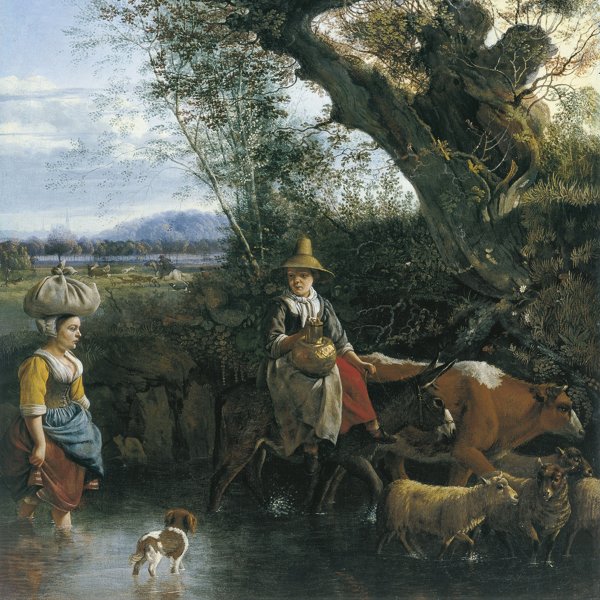Jan Siberechts
Siberechts was born in Antwerp in 1627 and first trained with his father, the sculptor Jan Siberechts. In 1649 he is recorded as a master in the guild of Saint Luke in his native city. Among his first known works are various landscapes that reveal the marked influence of the Italianate painters, although there is no evidence that Siberechts travelled to Italy. From 1661 he developed a highly distinctive style and focused on subjects of rural life in the Netherlands. In these works the human presence acquires great importance, and his figures are larger than the norm in compositions of this type. Siberechts was particularly interested in depicting human figures and favoured female models with strong, robust bodies engaged in agricultural tasks. Among his most frequently depicted subjects was that of peasants with livestock and carts of hay or vegetables crossing a flooded road or a stream, for example, Watering Hole with Haywain (Karlsruhe, Staatliche Kunsthalle) or The Ford (Kunsthistorisches Museum, Vienna), the latter a subject that allowed him to experiment with the effects of light on water. Siberechts’ landscapes are noted for their distinctive palette, in which the whites, reds and yellows used for the figures’ clothes create a strong contrast with the green plants and vegetation. From 1665 his work reveals a growing interest in volume and form, evident in The Pond (Antwerp, Koninklijk Museum), which is characterised by the use of fewer figures, placed in more prominent positions in the foreground and by a greater emphasis on modelling.
George Villiers, second Duke of Buckingham, encountered the artist’s work in 1670 during a trip to the Low Countries and invited Siberechts to England to decorate his residence at Cliveden. In the 1670s and 1680s Siberechts travelled around England, undertaking numerous commissions and acquiring great prestige among the aristocracy. During these years he painted landscapes of rural views and hunting scenes set in the grounds of country residences. These works are of great interest from a topographical and historical viewpoint as they are the earliest pictorial records of their kind. Siberechts’ art was extremely influential for British landscape painting.





